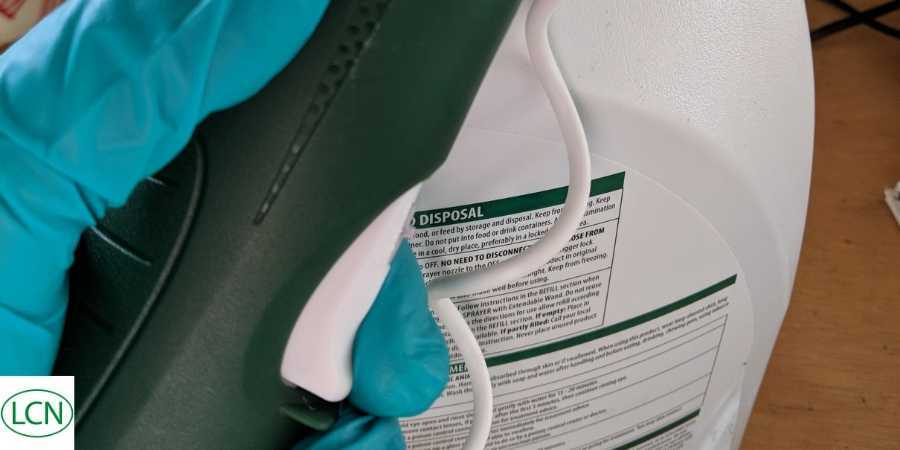How Do I Kill Weeds in My Lawn?
- "The Lawn Care Nut"May 4, 2019
We are coming up on one of my favorite days of the year, Kentucky Derby Day which is followed directly by May 5 or, Cinco-De-Mayo.
I like these days for the racing and the margaritas of course, but more importantly, I’ve always thought of this time of year, the first week of May, as the peak time for lawns in much of the country.
When I lived in NW Indiana outside of Chicago, I had some of my enjoyable times mowing the lawn right around this time of year. Spring rains are pushing the lawn naturally bolstered by lightning releasing natural nitrogen into the air. Even the grass on the side of the highway is green this time of year.
However, there are other plants thriving in lawns this time of year and those are dandelions, clover, plantain, dollar weed, ragweed and many many more!
It seems all that extra rain, nitrogen and sunlight help everyone, so what can we do?
First off, having a thick, healthy stand of turf is the best way to help crowd out weeds naturally. Pushing your turf to thicken up with Milorganite fertilizer is a great way to get there. Along your journey though, you may have to apply some herbicides.

(Thistle twisting and browning after being sprayed with weed control.)
Post-Emergent Weed Control
I’ve talked extensively about pre-emergent herbicides and how they can help prevent weed problems in your lawn later down the road. These primarily target crabgrass across most of the country. So what can we do to get rid of the broadleaf weeds like the ones mentioned above?
This is where a post-emergent (after they have already come up) weed control comes in and I’m going to give you the simplest approach and strategy for this season. Now what I am not going to talk about are “kinds of weeds controlled” or give recommendations on what to buy or what active ingredients to look for.
Instead, I want to give you methods or application alternatives. That is because many people have some apprehension when it comes to mixing up their own herbicides and spraying weeds. In order to help you get through that, I want to give you some ways to get started that have a less complicated entry point.

(“Ready to spray” makes a simple way to blanket spray with no separate mixing required.)
Ready to Spray Weed Control
"Ready to spray" (RTS) weed controls are formulated to be applied from a pre-made, pre-set hose end sprayer. You simply hook it up to your hose (wear gloves and other safety gear as instructed on the label) and go spray the weeds in the lawn.
"Ready to spray" application is best performed on a lawn that is more “covered in weeds” because this method is truly best applied as a “blanket” application. You literally spray the entire bottle evenly across the lawn.
The primary pieces of information you need in order to do this are your lawn’s size and the amount of square footage the product covers. From there you evenly apply the product through the sprayer across the lawn. Be sure to read the label and follow all instructions on re-entry to the area after application.
Since this is a blanket spray type application, you should apply it when the weeds are at their worst in the later spring. This just so happens to correspond with that first week of May time frame - for some reason, this is when weeds seem to be the worst in many areas of the country.

(One thing to look for is the coverage area of the "ready to spray" bottle.)
Ready to Use Weed Control
From there, you can manage the rest of the season by removing by hand or “spot spraying” weeds with a pre-mix formulation known as "ready to use.”
These are meant only to manage any single weeds or small areas of weeds that remain after your blanket spray. You can literally just patrol your lawn every couple weeks and spot treat any weeds that crop back up during the season. Once again, no mixing and storage of these formulations is easy. Just keep them out of direct sunlight and don’t let them freeze over winter.

("Ready to use” formulations come with a spray wand and are pre-mixed.)
Other than that, you are good to go. As always, read the label and follow all instructions! Reading the label is also a way to further educate yourself so you can perform a proper application and get the results expected.
A Few Weeds Are Ok
In the end, if you can eliminate even 50% of the weeds in your lawn, you will see a big result! That’s because along with your treating of your weed problem, you are pushing the turf to thicken up with our friend Milo, as well as mowing properly to stimulate more roots and rhizomes and stolons.
It’s also ok to live with a few weeds. Take your time, work your plan and watch that lawn help you take over the weeds as you care for it year after year!
I’ll see you in the lawn!

